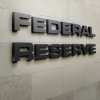- Date
- 10 March 2021
Natural Selection: Dovish Behaviour Drives Volatility on the US Markets
Natural Selection: Dovish Behaviour Drives Volatility on the US Markets
By Alison Catchpole |
The Story
“I want to be clear about this,” said US Federal Reserve (Fed) Chair Jerome 'Jay' Powell on 3 March 2021 at a Wall Street Journal event, cautioning that the Covid-19 vaccine rollout could bring rising prices amid surging consumer spending. “If we do see what is likely a transitory increase in inflation, where longer term inflation expectations are broadly stable at levels consistent with our framework and goals, I expect that we will be patient” (Yahoo Finance). Powell was referring to patiently maintaining the ‘easy money’ policy of quantitative easing, with the US central bank buying US$120 billion in mortgage-backed securities and government debt each month (NYT). But stocks tumbled in the wake of the speech.
The Federal Reserve Act 1913, which created the Federal Reserve System, had three aims: maximizing employment, stabilizing prices, and moderating long-term interest rates. Ex-Davis Polk & Wardwell lawyer Powell, a Trump appointment nominated to the Fed by Obama, is currently perceived as ‘dovish’: more interested in spurring job growth through low-interest rates than in controlling inflation. Critics argue that this approach can overheat the economy, resulting in runaway inflation. A ‘hawkish’ approach would favour a tight monetary policy to control inflation.
Bond prices and yields work antagonistically. As one rises, the other falls - meaning future interest payments for holding the bond are worth less. The Fed slashed interest rates during the height of the pandemic. With a recent jump in longer-term bond yields and thus longer-term interest rates, investors appear to be betting that higher inflation and growth may be imminent (New York Times). Powell failed to reassure investors or clarify steps the Fed will take to rein in volatility if stimulus from the Biden administration drives inflation harder than expected. So investors saw a green light for continuing bond yield rises. All eyes are on the meeting on 17 March 2021 of the Federal Open Market Committee (FOMC), that directs open market operations and thereby the monetary policy.
What It Means For Businesses And Law Firms
For a long time US bonds have been perceived as some of the most credible risk-free assets, and a liquidity crisis in the US Treasury Market could be catastrophic. Fed officials are not warning that is the case, but when equity markets are selling off – as higher interest rates make companies’ future cash flows less attractive – investors pour cash into lower-risk bonds. This means bond prices go up and bond yields go down. With bond yields up, the Fed has a number of options. It could snap up more of the longer-term bonds, pushing up prices. Alternatively, it could exercise ‘curve control’, buying as many bonds as necessary to keep an agreed cap on yields below a certain level.
Pulling an all-nighter on Friday, a divided Senate passed Biden’s US$1.9 trillion (that’s 12 zeros) stimulus plan, though Republican lawmakers claim the aid represents under-targeted overspending (Financial Times). The next hurdle is infrastructure reform, which will keep lawyers busy putting together contracts and funding in government contracts, corporate finance, and construction. "There's no doubt that an administration that views regulatory action as a policy essential puts more lawyers to work each day than an administration looking to cut two regulations for every one it approves," said Kevin O'Neill of US law firm Arnold & Porter in autumn 2020 (Law 360; Covington). Survival of the fittest is never far from the agenda, or, it seems, the Fed.
